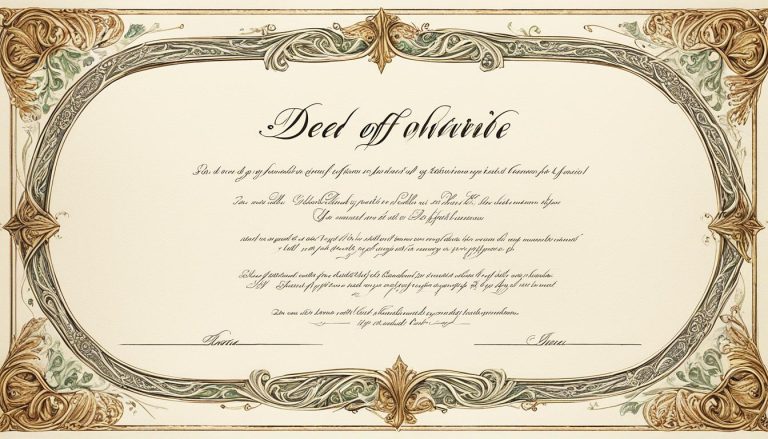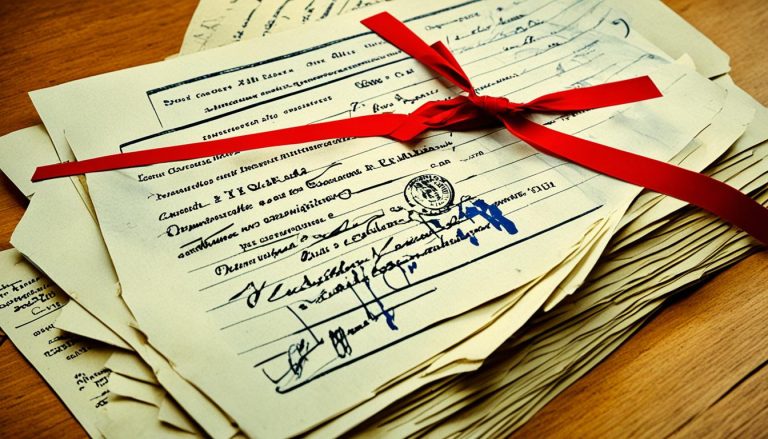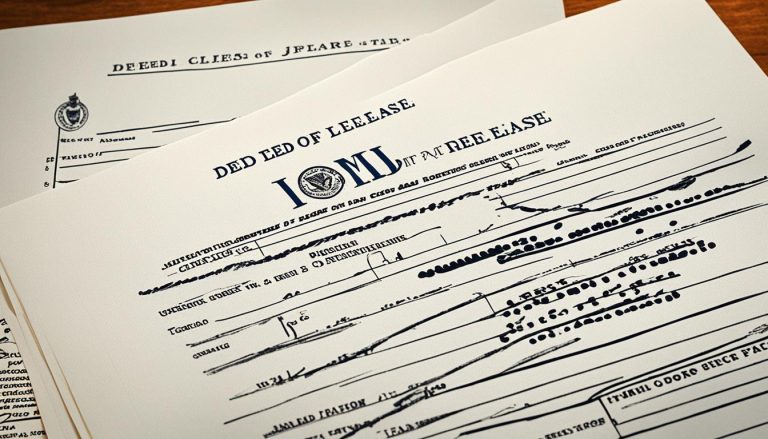Are you a future homeowner looking to buy your dream house? Or are you simply curious about the ins and outs of real estate financing? Look no further! In this blog post, we will delve into the world of mortgage deeds – what they are, how they work, and why they are crucial in the home buying process. So grab a cup of coffee and let’s demystify the complex world of mortgages together!
What is Mortgage Deed?
A mortgage deed is a crucial legal document that facilitates property transfer between a borrower and a lender. It serves as proof of a loan agreement and is used to secure the loan against a property, typically real estate. This comprehensive guide will provide you with all the essential information you need to know about mortgage deeds, from their purpose and components to the recording and registration process.
Whether you’re a borrower or a lender, understanding the intricacies of a mortgage deed is vital. By familiarizing yourself with this document, you can ensure that you are aware of your rights, obligations, and potential risks associated with the mortgage agreement. Additionally, knowing how to properly sign a mortgage deed is crucial to make it legally binding.
Stay tuned as we delve into the essential components of a mortgage deed, the importance of recording and registering it with the land registry, and the emergence of digital mortgage deeds for remortgages. By the end of this guide, you’ll have a comprehensive understanding of mortgage deeds and how they impact property ownership and mortgage agreements.
Components of a Mortgage Deed
A mortgage deed is a legally binding document that outlines the terms and conditions of a mortgage agreement. It contains several essential components that establish the rights and obligations of both the borrower and the lender.
Parties Involved
The mortgage deed identifies the borrower (mortgagor) and the lender (mortgagee) involved in the transaction. This ensures clarity and accountability for all parties.
Property Description
The mortgage deed includes a detailed description of the property being used as collateral for the loan. This ensures that the property ownership is properly documented and protected.
Loan Amount and Terms
The mortgage deed outlines the specific loan amount and the repayment terms, including the interest rate and duration of the loan. This provides transparency and clarity for both parties involved.
Mortgage Clauses
The mortgage deed may include various clauses that further define the rights and obligations of both parties. These clauses could include acceleration clauses or due-on-sale clauses, which protect the lender’s interests and clarify the responsibilities of the borrower.
Signatures and Notarization
To make the mortgage deed legally binding, both the borrower and the lender must sign it. In some cases, notarization or witnessing by a legal authority is required. This ensures the validity and enforceability of the mortgage deed.
| Components | Summary |
|---|---|
| Parties Involved | Identifies borrower and lender |
| Property Description | Detailed description of collateral property |
| Loan Amount and Terms | Specifies the loan amount, interest rate, and repayment terms |
| Mortgage Clauses | Defines additional rights and obligations of parties |
| Signatures and Notarization | Legally binding signatures and verification |
Recording and Registration of a Mortgage Deed
To establish the lender’s priority and make the mortgage deed public, it is typically recorded and registered with the relevant government office, such as the land registry. Recording the mortgage deed ensures that it is officially documented and searchable by interested parties.
It also prevents subsequent buyers or lenders from claiming ignorance of the existing mortgage. The registration process helps establish the chain of title and maintains a clear record of who holds the mortgage and any changes in ownership or lien priority.
Timely registration of the mortgage deed is crucial for protecting the lender’s interest in the property and ensuring transparency and security for the borrower as a property owner.
Importance of Recording and Registering a Mortgage Deed
Recording and registering a mortgage deed provides several benefits to both lenders and borrowers:
- Establishing priority: By registering the mortgage deed, the lender secures their priority over subsequent liens or claims on the property.
- Transparency and clarity: Registered mortgage deeds create a clear record of ownership and encumbrances, ensuring transparency for all parties involved.
- Third-party protection: Interested parties can search the land registry to confirm the existence and details of a registered mortgage deed, protecting their interests.
- Legal validity: Registered mortgage deeds carry legal weight and provide evidentiary support in the event of disputes or legal proceedings.
Registering a mortgage deed with the land registry is a crucial step in the conveyancing process, providing security and peace of mind to lenders and borrowers alike.

Key Steps in Recording and Registering a Mortgage Deed
| Step | Description |
|---|---|
| 1. | Prepare the mortgage deed |
| 2. | Submit the deed for recording |
| 3. | Pay the recording fee |
| 4. | Review and verification by the recording office |
| 5. | Official recordation of the mortgage deed |
| 6. | Registration with the land registry |
| 7. | Receive the recorded and registered mortgage deed |
Importance of Understanding a Mortgage Deed
Understanding the mortgage deed is crucial for both borrowers and lenders. It provides clarity on their obligations, rights, and assists in risk assessment. For borrowers, the mortgage deed outlines their obligations, including making on-time mortgage payments and adhering to the repayment schedule. Additionally, it ensures they are aware of their rights as defined in the deed, such as the right to dispute errors or receive proper documentation. By understanding the mortgage deed, borrowers can assess the associated risks, such as potential penalties or fees, and make informed decisions.
Lenders heavily rely on the mortgage deed to safeguard their investment and establish their rights and remedies in case of default or non-compliance by the borrower. The mortgage deed acts as a legal contract that protects lenders’ interests while providing them with a clear course of action if the borrower fails to uphold their obligations. It ensures that lenders have the necessary framework to recover the outstanding balance and potentially enforce foreclosure if needed. Through the mortgage deed, lenders can assess the risks of lending and mitigate their exposure.
To illustrate the importance of understanding a mortgage deed, consider the following scenario:
Mitigating Risks: A Case Study
Sarah, a first-time homebuyer, is excited to purchase her dream property. She secures a mortgage loan and signs the mortgage deed without thoroughly understanding its contents. Over time, Sarah encounters difficulties in meeting her mortgage payments due to unforeseen circumstances. Facing financial troubles, Sarah realizes the importance of understanding her mortgage deed.
Upon reviewing the document, Sarah discovers clauses related to late payment penalties, the lender’s right to repossess the property, and potential legal implications of default. Sarah’s lack of awareness of these clauses initially puts her at a disadvantage. However, armed with a deeper understanding of her mortgage deed, she seeks assistance and explores available options.
Understanding her rights granted by the mortgage deed, Sarah contacts her lender to discuss a loan modification or refinancing arrangement that aligns with her current financial situation. By leveraging her knowledge of the mortgage deed, she enters into negotiations to find a viable solution that avoids foreclosure and benefits both parties involved.
| Risks of Not Understanding the Mortgage Deed | Benefits of Understanding the Mortgage Deed |
|---|---|
| Increased likelihood of default | Empowers borrowers to fulfill obligations |
| Unawareness of potential penalties or fees | Enables borrowers to proactively manage financial obligations |
| Difficulty in asserting rights | Equips borrowers to defend their rights and dispute errors |
| Limited options for recourse in case of non-compliance | Assists lenders in enforcing their rights and remedies |
A comprehensive understanding of the mortgage deed is vital for borrowers and lenders alike. Borrowers can navigate the terms and conditions with confidence, ensuring compliance with their obligations and mitigating potential risks. Lenders can protect their investments, enforce their rights, and swiftly address any issues that arise.

Now that you understand the significance of comprehending a mortgage deed, let’s explore the process of signing a mortgage deed in the next section.
How to Sign a Mortgage Deed?
When signing a mortgage deed, it is essential to follow the proper procedures to ensure the legality and validity of the document. Here are the steps involved in signing a mortgage deed:
- Choose a witness: A witness is required during the signing of a mortgage deed. The witness must be independent, meaning they cannot have any connection to the property or be a family member. They should also be over 18 years old.
- Carefully review the deed: Before signing the mortgage deed, it is crucial to thoroughly read and review its terms and conditions. Verify that all the details mentioned in the deed, such as the loan amount and repayment terms, match the mortgage offer you agreed upon with the lender.
- Seek legal advice if needed: If you have any questions or concerns about the mortgage deed, it is advisable to consult a legal professional. They can provide guidance and ensure that you understand the implications of signing the document.
- Sign the mortgage deed: Once you are satisfied with the terms and have sought any necessary legal advice, you can proceed to sign the mortgage deed. Ensure that you sign in the presence of the witness, who will confirm your identity and the fact that you have indeed signed the document.
The signed mortgage deed acts as a legally binding document, committing the borrower to repay the loan according to the agreed-upon terms. It is crucial to approach the signing process with caution and ensure that you fully understand your obligations as outlined in the mortgage deed.

Digital Mortgage Deeds
In some cases, digital mortgage deeds may be available for remortgages. These digital deeds streamline the conveyancing process by allowing for electronic execution and avoiding paperwork. The lender creates the digital deed, and the borrower goes through an identity verification process to sign it digitally. Digital mortgage deeds are legally binding and enforceable, but they only apply to remortgages. It is still essential to review the terms and conditions carefully before signing a digital mortgage deed.
Benefits of Digital Mortgage Deeds for Remortgages
Digital mortgage deeds offer several advantages for remortgages. Here are some key benefits:
- Convenience: With digital deeds, borrowers can sign their mortgage documents from the comfort of their own homes or anywhere with an internet connection. This eliminates the need for physical meetings and saves time and effort.
- Speedy Execution: The electronic signing process allows for quick execution of the mortgage deed. There is no need to wait for postal delivery or hand-delivery of original documents, enabling a smoother and faster transaction.
- Reduced Paperwork: Digital mortgage deeds eliminate the need for excessive paperwork, reducing the administrative burden for both lenders and borrowers. This not only saves resources but also contributes to a more environmentally friendly approach.
- Enhanced Security: Digital mortgage deed platforms implement robust security measures to protect sensitive information and prevent unauthorized access or tampering. This ensures the integrity and confidentiality of the mortgage transaction.
- Improved Accessibility: Digital mortgage deeds provide easier access to important documents, allowing borrowers to review their mortgage terms conveniently anytime they need to reference the agreement.
Overall, digital mortgage deeds offer a modern and efficient alternative to traditional paper-based documentation for remortgages. They simplify the process, increase convenience, and provide a secure and streamlined experience for all parties involved.
| Traditional Mortgage Deeds | Digital Mortgage Deeds |
|---|---|
| Require physical signature and delivery | Electronic signature and instant delivery |
| Time-consuming paperwork | Reduced paperwork |
| In-person meetings and travel | No need for physical meetings |
| Higher risk of document loss or damage | Enhanced security and document accessibility |
As technology continues to advance, digital mortgage deeds are becoming a popular choice for remortgages due to their efficiency, cost-effectiveness, and convenience. However, it is crucial for borrowers to carefully review the terms and conditions of digital mortgage deeds before signing to ensure they fully understand their obligations and rights.
Conclusion
Signing a mortgage deed is a crucial step in the property purchase process. It establishes the legal agreement between the borrower and the lender and secures the loan against the property.
Thoroughly understanding the terms and conditions outlined in the mortgage deed before signing is essential for both borrowers and lenders. Seek legal advice, if necessary, to ensure clarity and alignment with expectations.
Take your time, review each detail, and never sign a legally binding mortgage deed unless you are comfortable with the terms included. This will help ensure a smooth and secure property purchase journey.






